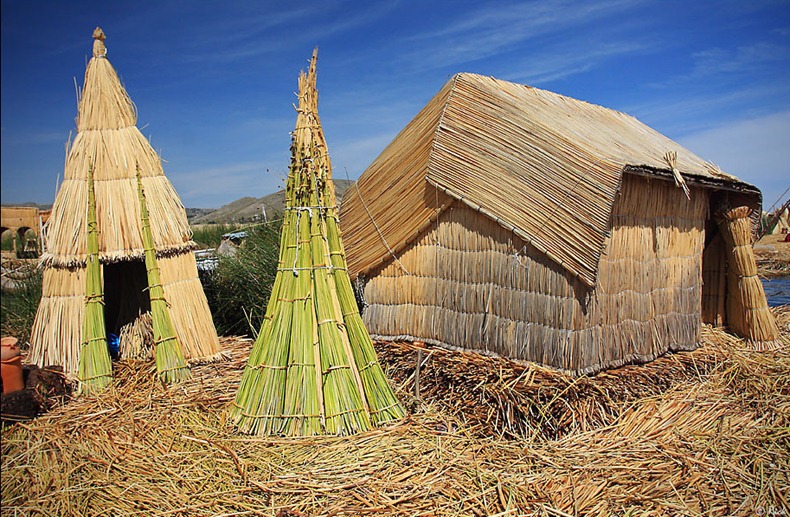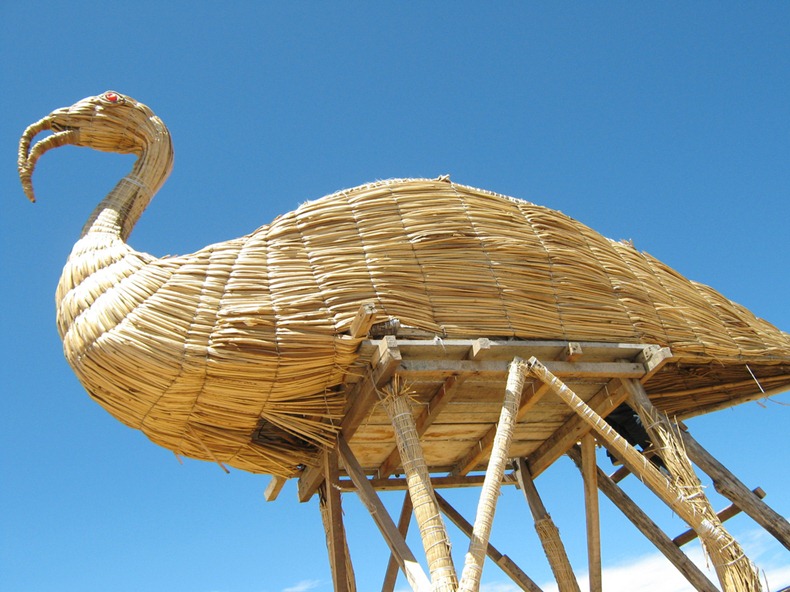By volume of water, it is also the largest lake in South America.
These islands have become a major tourist attraction for Peru, drawing excursions from the lakeside city of Puno.
The purpose of the island settlements was originally defensive, and if a threat arose they could be moved.
The largest island even retains a watchtower almost entirely constructed of reeds.
The totora is a cattail jot down rush growing native in the lake.
The islands change in size, and more are created as the need arises.
Much of the Uros' diet and medicine also revolve around these totora reeds.
When a reed is pulled, the white bottom is often eaten for iodine.
When in pain, the reed is wrapped around the place in pain to absorb it.

In this stage, it is very cool to the touch.
The white part of the reed is also used to help ease alcohol-related hangovers.
They also make a reed flower tea.
Food is cooked with fires placed on piles of stones.
The floating islands are protected within the Bay of Puno and are home to 2000 or so Uros.
They live by fishing, weaving and now, tourism.
They catch fish for themselves and to sell on the mainland.
Uros also hunt birds such as seagulls, ducks and flamingos, and graze their cattle on the islets.
They also run crafts stalls aimed at the numerous tourists who land on ten of the islands each year.
It is a lot of work to maintain the islands.
Tourism provides financial opportunities for the natives, while simultaneously challenging their traditional lifestyle.













